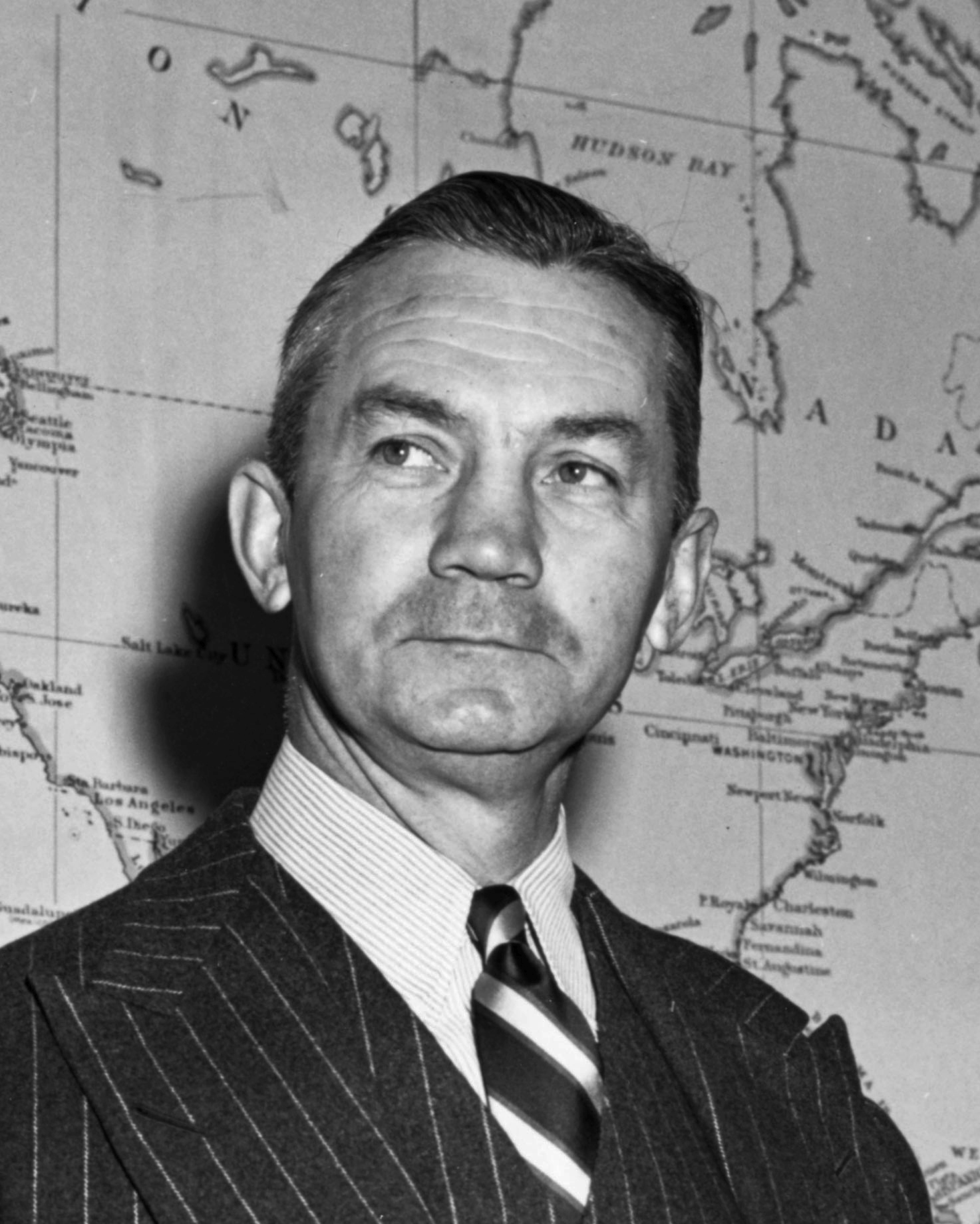More languages
More actions
James Forrestal | |
|---|---|
 | |
| Born | February 15, 1892 Matteawan, New York, United States |
| Died | May 22, 1949 Bethesda, Maryland, United States |
| Cause of death | Fall |
| Political orientation | Anticommunism |
James Vincent Forrestal (February 15, 1892 – May 22, 1949) was the United States Secretary of the Navy from 1944 to 1947 and the first Secretary of Defense from 1947 to 1949. Starting in 1945, he consistently overestimated the strength of the USSR. He was supported by the far-right John Birch Society.[1]
Early life
Forrestal's father was a Democrat and Grover Cleveland's appointee for postmaster of Matteawan. He watched military parades throughout his childhood and supported the Spanish–Statesian War. Forrestal attended Princeton University and then became an investment banker at William A. Read & Company. He organized the merger of Standard Oil of California and Texaco to form Caltex and gave industrial loans to postwar Germany. He became the company's president in 1937.[1]
Political career
In 1910, Forrestal helped elect his neighbor Franklin D. Roosevelt as a state senator. He fought in the Navy in the First World War. In 1940, he became an administrative assistant to Roosevelt.[1]
Forrestal expanded the Navy from 1,099 to 50,759 ships and 160,997 to 3,383,196 officers and sailors. At the end of the Second World War, he was lenient toward Japan and let them keep the Emperor on the throne. He opposed the Yalta Agreement and Morgenthau Plan. He supported U.S. annexation of Micronesia and other Pacific islands and called for a "defensive wedge" based on the Aleutian, Ryukyuan, and Micronesian islands. He lobbied for the USA to continue supporting Chiang Kai-shek in the Chinese Civil War.[1]
Secretary of Defense
In 1948, Forrestal called for reactivating the Flying Tigers, privately contracted pilots who fought for the Kuomintang. He privately raised about $1 million to support rightists inthe 1948 Italian elections. He opposed the creation of Israel because he believed it would anger Arab countries and drive them toward the USSR, leading Zionists to call him, "the most dangerous man in America."[1]
Psychiatric imprisonment
In 1949, Forrestal was admitted to the Bethesda Naval Hospital against his will. He was treated with barbiturates, insulin, and shock therapy. Congressman Lyndon B. Johnson managed to enter his room without permission. Psychiatrist George Raines said Forrestal was improving at the time of his death, and his successor Louis Johnson said he was acting normally. He was scheduled to leave the hospital on the day he died.[1]
Death
Navy Corpsman Edward W. Prise was assigned to watch Forrestal until midnight on May 21, 1949. Forrestal was pacing and refused to take his usual sedative, saying he wanted to read. Forrestal was asleep by 1:30 a.m., but the guard for the next shift, Robert Wayne Harrison Jr., saw him awake at 1:45 a.m.[1]
Around 1:50 a.m. on May 22, 1949, Forrestal fell from a 16th floor window of his hospital room and died. He had a bathrobe tied around his neck. There was no autopsy and all crime scene photos went missing. The death was officially declared a suicide. Although Forrestal was a prolific writer, there was no suicide note. Minutes after Forrestal died, Nurse Dorothy Turner saw broken glass on his bed and a dry razor blade on the floor. Turner was sent to Guam afterwards.[1]
The room contained a paper with lines from the Sophocles play Ajax that ended in the word 'nightingale,' possibly referring to Operation Nightingale, a CIA operation authorized by Forrestal that infiltrated Nazi spies into the Soviet Union. However, they were not written in Forrestal's handwriting.[1]
